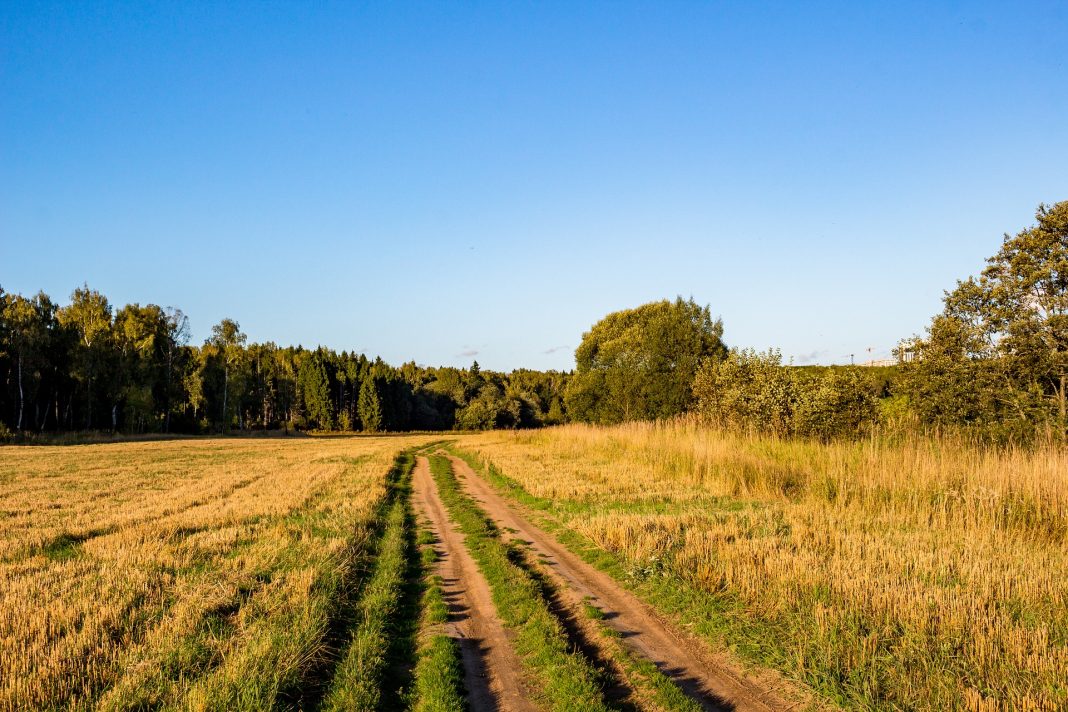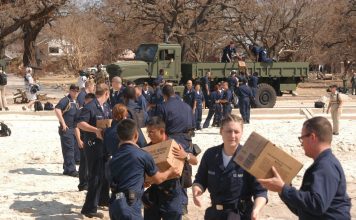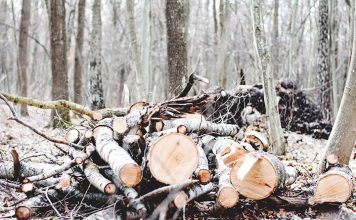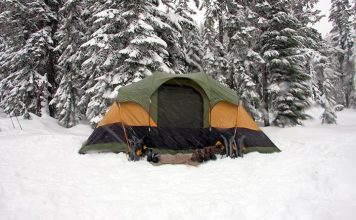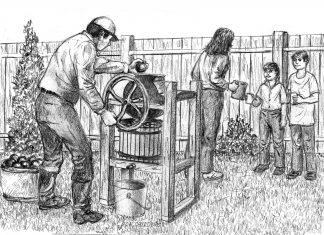 |
|
| Issue #114 • November/December, 2008 |
Everything’s getting more expensive. Food. Gasoline. Guns and ammunition. Not everyone who appreciates the rural lifestyle was “born with a gun in their hand” the way some of us feel as if we’ve been. Many are urban-dwellers who’ve figured out for themselves that living closer to nature is a better way, and nothing from their previous metropolitan lifestyle has prepared them for their sudden realization that firearms are important, routinely-used tools for those who live “in the country.”
Reading is good, but training is better. My advice to the people new to guns would be to take a firearms safety course before buying their first firearm. It’ll give them a better idea of what they want, what they need, and what will suit them in terms of the size, the power, and the mechanics of the many, many firearms they have the option of buying. Your local office of the state Fish and Wildlife Department will be able to steer you toward hunter safety and firearms safety courses. As adult education goes, these courses are extremely affordable. If self-defense is your primary concern, your local gun shop or police department can direct you to armed citizen training programs. Most of these are geared toward folks about to apply for concealed carry permits, but the advice encompassed in their curricula are essential even for those only concerned with defending the home against violent intrusion.
Building a battery
A “battery” of firearms is a selection of guns that will cover multiple needs. The collector has “a collection,” but the person who uses guns as tools has a working “battery,” like a carpenter having multiple saws for different cutting purposes, and different screwdrivers for dealing with different sizes of screws.
|
At an absolute minimum, I would suggest four guns for the backwoods home. These would be a .22, a shotgun, a defensive-type handgun, and a high-powered rifle.
Just for the sake of argument, let’s assume some frugality at work. I know trapshooters whose custom shotguns cost more than my SUV did new off the showroom floor, and gun collectors who might buy a single rare firearm that’s worth more than my home and the real estate it sits on. Common sense economy is one of the values this publication celebrates, after all.
The .22
The .22 Long Rifle cartridge is the most popular in the United States. It has mild blast and mild recoil. Above all, it is cheap. With careful shopping, at this writing you can buy 500 cartridges for $12 to $15. Because it is a low-pressure cartridge, the manufacturers don’t have to wrap a lot of super-strong metallurgy around it, and .22s tend to be cheaper than more powerful guns of similar quality.
Let me say it here and now: because it is so mild and inexpensive to shoot, the .22’s single biggest advantage for the new shooter is that it lets them shoot enough to grow accustomed to shooting, and to become good at it!
As to shooting needs on a rural property, the .22 Long Rifle is a small game cartridge. It’s suitable for rabbits, squirrels, raccoons, groundhogs, and the like. It’s good for crows. It’s a good choice for feral cats. It can certainly kill feral dogs, or foxes and coyotes, but frankly it’s a little on the light side for animals that size. Remember, even if the animal must die so your livestock may live, you owe it a quick and humane death.
The .22 is a traditional gun for slaughtering livestock. In that situation, however, the animal must be penned under control, and the person performing the slaughter must take their time to put the bullet exactly through the skull in the right spot to reach the brain for an instant, painless death. That won’t be possible when shooting a wild animal. When a steer goes wild and tries to trample you, or Ol’ Yeller turns rabid and is coming at you, trust me: you’ll want something a lot more powerful than a .22.
In most cases, the .22 is a rifle. Whether it has traditional “iron sights” or a telescopic sight, the two-hand grasp and the brace of the butt against your shoulder maximizes accuracy. If you get really good with it, a target grade handgun will get the job done at a typical “house to barn distance” of, say, 25 to 50 yards.
|
The .22 is available in many formats. There is the single-shot, the traditional “young hunter’s starter gun” of yesteryear. Today, the scaled down Chipmunk or Henry bolt action single shot is the right size for grade-school age kids, and a great choice for getting the young ‘uns off to a good start in firearms safety. There are Western style lever actions, and pump-action .22s like the ones we geezers can remember from the live-fire shooting arcades on the boardwalks of our youth. The bolt-action repeating rifle makes a lot of sense for the user who won’t be able to keep the working gun as clean and pristine as they’d like. In the humid, rust-inducing atmosphere of the slaughterhouse, the “killing gun” I’m most likely to see is a bolt-action .22. Its mechanism operates like a turnbolt lock, and allows main physical force to operate it should it stick due to rust or crud in its neglected mechanism.
The semiautomatic .22 rifle would be my personal choice. If the fisher cat is about to devour your prize pet Persian, or the rabid skunk is about to lunge at your beloved family dog, one shot may not be enough. You’ll want a follow-up shot, and maybe another and another and another. The semiautomatic will fire as fast as you can hold on target and you don’t have to think about anything but holding your aim and pressing the trigger. You will, however, have to keep it cleaned and lubricated.
Cost-effective choices: Mossberg now imports a little semiautomatic .22 rifle from Brazil that they market as The Plinkster. It’s great for “plinking” tin cans off the back fence, as its name implies, but Master competitive shooter Steve Sager tells me his will put five shots in one hole at 25 paces…and never seems to jam. The price? Steve just bought his for $107 plus tax, brand new, from a big box store. The Ruger 10/22 and the Marlin Model 60 will cost somewhat more, but are longer-established, time-proven choices as splendidly reliable and surprisingly accurate semiautomatic .22 “utility rifles.” In an accurate .22 pistol, I’ve seen the polymer-framed Ruger 22/45 and the Smith & Wesson Model 22A both selling new for $250, and the Browning Buckmark is another cost-effective choice. The shooter more comfortable with the simple mechanism of a revolver can get a Taurus .22 for an MSRP (manufacturers’ suggested retail price) of $389 new.
The shotgun
Designed primarily to put a large spray of multiple pellets called “shot” in the air with each pull of the trigger, the shotgun is the logical choice for flying birds and is a top choice of small game hunters for shooting running rabbits and squirrels for the same reason. Loaded with the small pellets of birdshot for the feathered stuff and the small furred stuff, and with buckshot for close-range deer, bad dogs, and worse humans, the shotgun can also fire a single slug. Slug loads are fine for deer out to plus/minus 100 yards (assuming good rifle-type sights and a steady hand on the trigger), and many Alaskan guides think a short, fast-handling shotgun loaded with slugs is just the ticket for huge, angry wounded bears in the thickets. Because its “shells” can carry so many different types of projectiles, the shotgun is the most versatile of backwoods home utility firearms.
The giant 10-gauge shotgun is a long-range duck and turkey hunter’s weapon, and the tiny .410 shotgun is strictly for close range on small targets. Your all-around shotgun should be somewhere between 12- and 20-gauge. The less powerful 20 tends to have lighter recoil but, at close range, will probably do all you need done. The 12 is more versatile because it can carry more of its leaden payload, but you pay the price in notoriously hard recoil, or “kick.”
|
Shotguns can be had in economy bolt-action formats, but they tend to be cheaply made and I never saw one that didn’t kick mercilessly for a gun of its size with the shells it was chambered for. The single-shot break-open design has been a staple of American farms since the 19th century because it’s relatively cheap to manufacture, but it’s light for its power, kicks like hell, and doesn’t offer a follow-up shot if the first one hasn’t solved the problem. The double barrel is better, but a magazine-type shotgun such as the slide-action or the semiautomatic tends to be more practical for workaday rural needs. The semiautomatic is faster to shoot, nothing to do but pull the trigger, and in a gas-operated model will kick less since much of the recoil is absorbed in operating its cycling mechanism. However, as with .22 rifles, the “auto” demands more maintenance than it often gets. The rugged, manually operated slide-action, or “pump gun,” may be the better choice, and will certainly be cheaper.
Cost effective choices: In either 12- or 20-gauge, the Mossberg 500 and the Remington 870 Express models are quality pump shotguns commonly available at affordable prices. I’d give the Mossberg the point for ergonomics (ambidextrous safety right under the thumb, easy loading without pushing shells past a spring-loaded magazine gate), and the Remington the point for smoothness of action and trigger pull. The Mossberg will start at around $350 MSRP, and the Remington, at $359.
The high powered rifle
Jackie Clay, probably our most popular featured writer at Backwoods Home Magazine, considers venison a staple of her larder and shoots her annual supply with a lever-action Winchester Model 94 .30-30, the classic “deer rifle.” Marlin makes the comparable Model 336, currently in production and in the low $500 range MSRP. Both are suitable for deer and black bear-size game.
If you’re located where the meat-bearing critters are bigger (northern moose, western mule deer), or farther (plains antelope, let’s say), you want a higher velocity, more accurate rifle, and you’ll definitely want a telescopic sight. We’re talking a bolt action in the .270, .308, .30-06 etc. caliber range. Bolt action is the overwhelming choice here: its more rigid receiver, or frame, enhances precision. As with other firearm types, the bolt action high power rifle gives the shooter manual leverage that helps when the mechanism is gunked up by mud, bad weather, or owner neglect.
If you’re in big, bad bear country, you might want to ratchet the power level up a notch. A .338 Winchester Magnum or 7mm Remington Magnum is more in line here. If I needed to ruin a really big bruin, I’d pony up $1,122 suggested retail for the semiautomatic BAR (Browning Automatic Rifle) in caliber .338 Winchester Magnum and consider every penny well spent. The bear attacks I’ve studied have happened very, very fast, and the big guys have soaked up a lot of firepower and kept fanging and clawing. Follow-up rounds of the hefty .338 persuasion as fast as you can pull the trigger would make huge sense here.
|
The “high power rifle” title also encompasses smaller bullets going faster: rounds like the ubiquitous .223 Remington or the super-fast .22/250. Great for long-range shots on the woodchucks that are tearing up your crops and are WAY out there, but not quite generating the smack and penetration you need for deer size game.
If you’re not planning on hunting and don’t have problems with either very large, mean animals or very distant ones, the high powered riflethe “deer rifle,” if you willis probably the one gun in the battery you can most easily do without.
Cost effective choice: You’re looking at MSRP in the $600-700 range for a plain-Jane bolt action Remington Model 700, Ruger Model 77, etc.; the Savage bolt action is often found new at “best buy” prices. I’m comfortable with any of them. A lower price is featured on Remington’s fairly new, economy-grade Model 770. I’ve heard good things about this rifle, but haven’t had a chance to check one out yet myself.
The defensive handgun
Folks move to the boonies to get away from the sort of lifestyle that makes you feel more comfortable carrying a gun 24/7. Hate to be the one to break it to you, but wherever you are, the need to defend yourself from man or beast tends to arise suddenly, without time to run to the gun cabinet.
A .22 pistol is handy for pot meat from ptarmigan to tree rat (“squirrels,” for the city folk), and while it can certainly kill a large, aggressive creature, it won’t necessarily stop it in its tracks. A .44 Magnum double action revolver would be my choice if I had big brown bears in my backyard. Most of us south of Alaska don’t have to deal with that, though, and a more moderately powerful sidearm that you can wear whenever you’re dressed makes a lot of sense. If being visibly armed is not part of your vision of ambient rural living, I understand; however, compact .38 Special or .357 Magnum revolvers are available in a discreet pocket size, and can be with you constantly.
Each of us lives in a different place with different situations that will guide our choices in everything from clothing to vehicles to, yes, firearms. I can only say that on the rural property where I have lived for the last four years, I have a battery that encompasses everything from varmint rifles to elephant guns, yet every time I’ve had to kill something on this particular turf (multiple poisonous snakes, and one really angry hog) I did it with the .357 or .45 pistol that was on my hip because nothing more suitable was within immediate reach in time.
Cost effective choice: For a small .38 Special or .357 Magnum revolver with a short barrel that lives in your pants pocket, a Ruger, Taurus, or Smith & Wesson will do nicely. The MSRP can range from low $400 to around a grand. In a holster-size semiautomatic pistol in a caliber with authority (9mm, .40, .45, or .357 SIG) you’re looking at Glock, Ruger, SIG, Smith & Wesson and Taurus in a roughly $400-700 range bought new.
Purchasing used
|
The mechanic who purchases a pre-owned automobile is unlikely to get burned on the deal. He or she knows what to look for. The person who doesn’t know much about cars except how to drive them won’t get burned on a used car either…if he takes an auto mechanic he can trust with him to review the vehicle in question before he plunks down his cash.
Just as a spanking new automobile becomes a used car the moment the first buyer wheels it out of the dealer’s lot, a brand-new firearm becomes a second-hand gun as soon as it fires its first shot outside the factory testing range. In either case, unless the machine in question is a rare collector’s item, that first transfer of ownership drops cash value precipitously.
This means that careful shopping can get you a helluva deal on a gun someone else has broken in for you. It’s all about the condition of the individual specimen. I know some purist collectors who act as if a single freckle of rust on the otherwise perfect blue finish of the gun they want is as much a deal-breaker as if they were collecting Picasso paintings and a cat had urinated on the canvas.
With a working gun, external blemishes are going to happen anyway. The stock and even some of the metal is going to get dinged and dented in the natural course of use. Some of the finish is going to get worn anyway. Thus, a rough finish is perfectly acceptable for a backwoods working gun, so long as the arm is mechanically in perfect working order.
Case in point: In 1995, I found myself at Jack First’s outstanding gun shop in Rapid City, South Dakota. Looking up at me from the used gun case was a very well-worn Smith & Wesson Combat Masterpiece Model 15 .38 Special, carrying the even-then unbelievably low price tag of $130. On a whim, I asked to see it.
It was the classic example of what the late, great gun expert Jeff Cooper characterized as a gun that had been “carried much and shot seldom.” More of its famously beautiful S&W blued finish had worn off than still remained. The frame was literally pitted, as if it had been worn in an outside holster through the snows and rains of many years of extreme Dakota weather. Someone had probably scoured off the rust with steel wool. Yet the lockup was as tight as a brand new revolver, and the borethe inside of the barrelwas absolutely pristine.
I reached for my checkbook, and made the arrangements to ship the gun to a licensed dealer for me, in the state where I lived. When I finally got it to the range, I discovered it would put every round of Federal Match grade 148 grain .38 Special ammunition into about an inch at 25 yards. I often used it thereafter to teach classes with, to reinforce the point that shooting is more about the shooter than the gun. This year, that ugly old beast won for me the Stock Service Revolver Champion plaque at the Tri-State Regional Championship (Arkansas, Mississippi, Tennessee) of the International Defensive Pistol Association. We shot that match in a driving rainstorm and, you know, I didn’t worry about rusting the gun for a moment. That’s as good an example as I can think of for the sort of value you can get in carefully shopping for used firearms.
I’m writing this on a quiet, rainy Saturday afternoon in North Florida. Some friends and I were heading south to Hernando this morning for an IDPA match, but turned back when we met a solid wall of thunderstorms halfway there. We returned home in leisurely fashion, doing a “gun shop tour” on the way. With this article in mind, I paid more attention than usual to the prices on good, used stuff.
At Southern Sportsman in Chiefland, I found a Marlin Model 336 with a generic 3-to-9-power variable telescopic sight. The caliber was .30-30 Winchester, adequate for anything one would be likely to hunt in this part of the country. The scope was the kind we associate with more powerful, longer range hunting rifles, but its magnification is always a one-last-check safety net for making certain that what we’re aiming at in the forest at twilight really is a deer, and really does have antlers. This carbine had led a hard life, with a gray patina and some pitting where its blue finish used to be, and lots of dents and dings in the buttstock and fore-end. However, I could find no rust in the bore, and the action still worked smoothly. The price? Thanks to its ugly duckling appearance, a mere $199.95 and certainly a solid value.
Moving north to Mayo, Daddy’s Gun Shop had one of those Brazilian-made Mossberg Plinksters, in virtually new condition, apparently traded in on something fancier. Its owner had installed a 3-9X variable power Tasco telescopic sight, decent optics for ordinary work. This was a full size (one-inch diameter) scope for a deer rifle, not one of those narrow little scopes designed for .22s and BB guns that you can barely find an image in. For sure, neither a .22 nor a BB gun is a toy, but the scopes made for them damn sure are. This new-condition .22 rifle and its good scope were tagged together at $138.
Further up the road, on the southern outskirts of Live Oak, Lundy’s Gun Shop had an old Stevens Model 77 12-gauge pump shotgun, tagged at $167. It was an economy gun the day it left the factory, but a sturdy one: the military used a bunch of them for jungle warfare during the Vietnam conflict. It had the same patina and dented wood that spoke of years in the corner of the barn or the back of the pickup truck, but it was in perfect working order.
|
For $505, plus sales tax and five bucks to each dealer for the NICS computer clearance to purchase a firearm from a licensed dealer, that would have put a .22 rifle, a .30-30 deer rifle, and a shotgun into the backwoods home gun rack, with telescopic sights on the rifles to boot. At manufacturers’ suggested retail pricing (MSRP), the Marlin .30-30 alone (without the scope) would have been more than that.
Quality handguns tend to run a bit higher than utilitarian “farm guns.” We finished our gun shop tour at Pro Arms in Live Oak, where a gentleman had just purchased a traded-in S&W Model 15 .38 Special Combat Masterpiece like the one I discussed above, but his was in virtually new condition. It appeared to have been fired very little, and was fitted with Uncle Mike’s Boot Grips, which allow the gun to conceal in an inside the waistband holster as well as a snub-nosed Detective Special, despite its accuracy-assisting four-inch barrel. The price was $325 before tax. S&W no longer produces the blue steel Model 15 version of the Combat Masterpiece, but its stainless steel Model 67 version has an MSRP of $774 at this writing. Whether for concealed carry or home defense, I could be happy with that.
Counting the revolver, the day’s shopping would have yielded a before-tax cost of $830 for enough guns to cover my basic firearms needs if I lived in a cabin in the area where we were shopping. Hell, the light-weight Smith & Wesson Model 340 Military & Police .357 Magnum snub-nose revolver that’s in my pocket as I type this would go that at suggested retail, by itself.
Bottom line
Don’t go for an A+ in one class at the expense of a grade of Incomplete on the rest of the curriculum. One screwdriver won’t do it all for you, nor will one saw, and neither will one firearm. A good, functional, representative example of each type puts a lot more versatility in your toolbox than the most expensive specimen of just one type. That’s how it is with tools…and, in a rural home, the working gun IS a tool. No more, no less.
Choose your tools carefully. Learn to use them well. And, above all, demand of yourself and others that they be used responsibly and safely.


